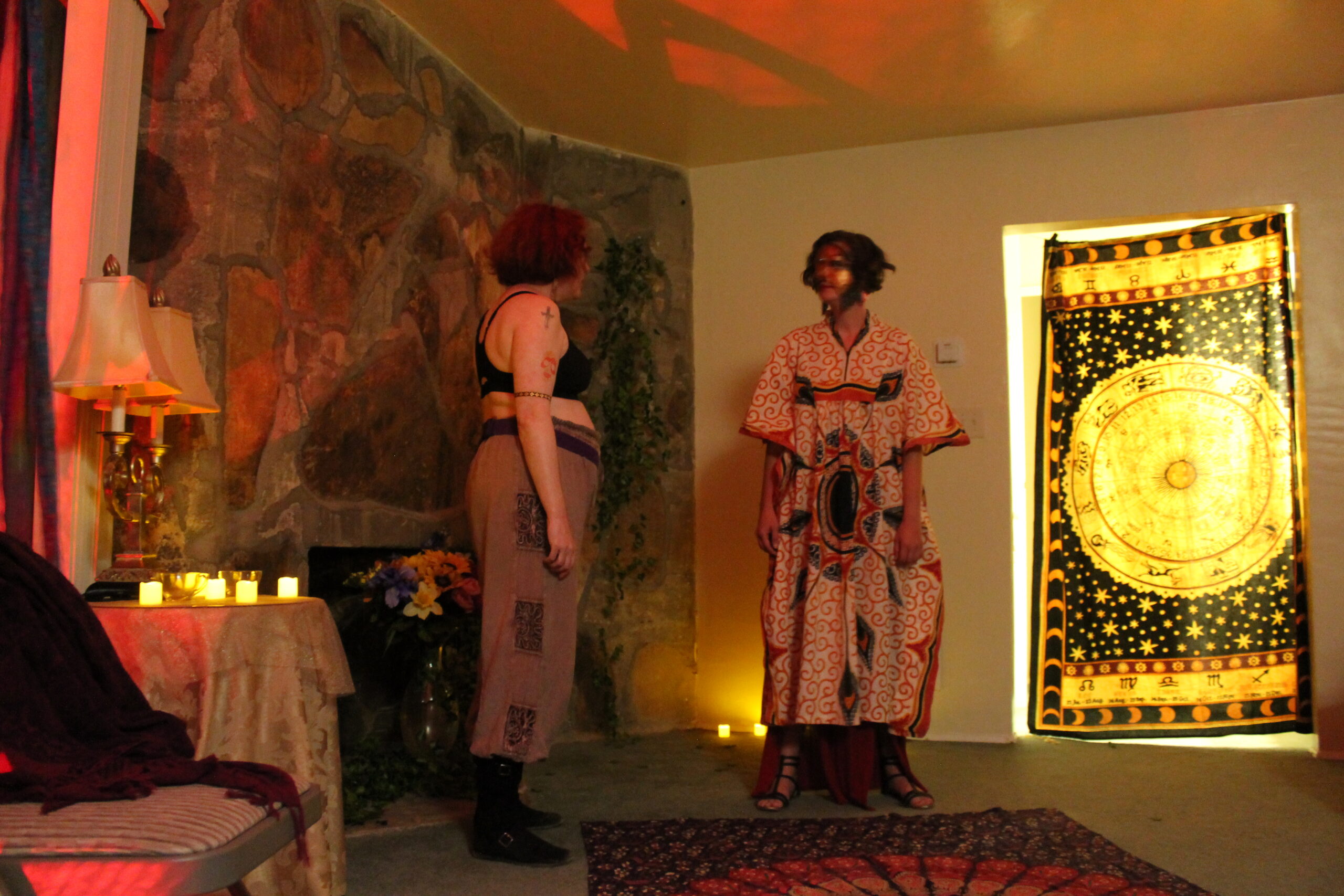Tag: Immerton
-

Immerton
in
Immerton is a 4-day larp written by women for women participants, taking place in a fictional society of women in a polytheistic goddess pantheon. Produced by Learn Larp, the game used a feminist sandbox design that emphasized rituals, relationships, collaborative roleplay, and transformational experiences using a meta room, mask play, and multimedia storytelling as core…
-

Immerton: A Fire in the Desert
I knew as soon as I heard about Immerton that I wanted to go. I’d been to one other women-only larp — the U.S. run of Mad About the Boy (2012) — and while it was some of what I wanted from the experience, it wasn’t quite all of it. Immerton sounded closer to what